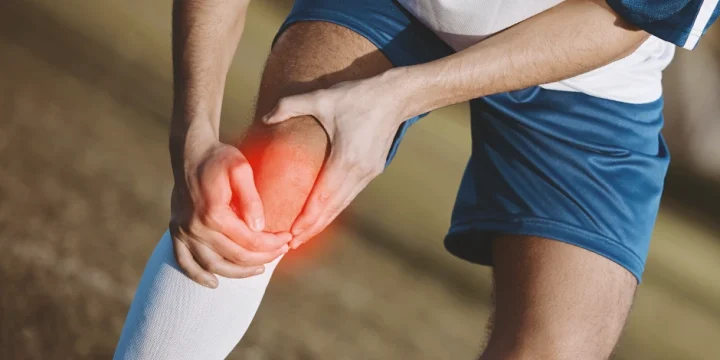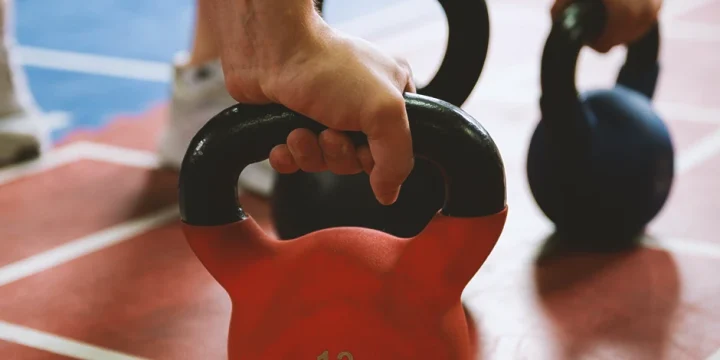Costochondritis is a cartilage inflammation condition connecting the ribs to the breastbone, causing chest pain. Incorporating targeted exercises and stretches into your daily routine relieves costochondritis pain.
Through my practical knowledge as a trainer and after helping multiple athletes with this pain, I recognize the importance of focusing on the chest and upper body stretches to relieve tension in the affected area.
This article presents a carefully curated list of exercises and stretches to help those suffering from costochondritis regain mobility and reduce discomfort.
Quick Summary
- The article provides a variety of exercises and stretches, including the Pectoral Corner Stretch and Diaphragmatic Deep Breathing, specifically designed to alleviate the symptoms of costochondritis.
- To effectively manage costochondritis, incorporating gentle exercises and stretches that target the chest and upper body is essential for pain relief and increased mobility.
- A study on ResearchGate revealed that pectoral stretching exercises performed 20 times a day for 30 seconds each significantly reduced VAS scores after 45 and 90 days in individuals with costochondritis pain.
- Having helped multiple athletes with costochondritis, I've seen firsthand how a balanced routine of targeted exercises and stretches can effectively reduce pain and improve mobility in affected individuals.
Gentle Exercises/Stretches to Ease Costochondritis Pain

The following gentle exercises and stretches promote healing for those suffering from costochondritis, according to the study from the ResearchGate website [1].
Pectoral Corner Stretch
The pectoral corner stretch helps release tension in the chest muscles, which reduces the discomfort associated with costochondritis. This stretch has become a staple in my recommended routines for those dealing with this condition.
How to do it:
- Stand facing a corner of the room.
- Place each forearm on the walls, with your elbows slightly below shoulder height.
- Lean gently until you feel a stretch in your chest.
- Hold until you feel your chest muscles stretch.
Straight Arm Pec Stretch

The straight-arm pec stretch aims at lengthening and loosening the pectoral muscles. This can be particularly effective in relieving chest pain and improving range of motion.
How to do it:
- Stand sideways to a wall.
- Extend the arm closest to the wall straight out and place your palm against the wall.
- Keeping your arm straight, slowly turn your body away from the wall until you feel a stretch in your chest.
- Hold and return to the starting point.
Ice the Chest
From my observations in practice, icing the chest has proven to be a highly effective method for reducing inflammation and numbing the area, which in turn helps in preventing muscle spasms that contribute to costochondritis pain. I often recommend this as a first-line approach for immediate relief.
How to do it:
- Take ice cubes or a cold pack in a thin towel.
- Gently press the wrapped ice against the painful area of your chest.
- Keep it there for about 15-20 minutes.
- Take a break for 45 minutes to an hour and then repeat if necessary.
Diaphragmatic Deep Breathing

According to another ResearchGate study, Diaphragmatic deep breathing reduces tension in the chest and promotes relaxation [2].
How to do it:
- Find a quiet space and sit comfortably.
- Place one hand on your chest and the other on your abdomen.
- Take a deep breath, ensuring your abdomen rises more than your chest.
- Exhale slowly through your mouth, allowing your gut to fall.
Mid-Scalene Sternocleidomastoid Stretch
This stretch eases musculoskeletal pain in the neck and chest, which relieves pain associated with costochondritis.
How to do it:
- Stand up straight with your shoulders relaxed.
- Tilt your head, taking your ear towards your shoulder.
- For a deeper stretch, gently press your head down with your hand.
- Slowly return to the starting position and repeat on the other side.
Pectoral Doorway Stretch

Incorporating the doorway pectoral stretch in your physical therapy routine releases pain and increases chest flexibility.
How to do it:
- Stand in an open doorway and raise your arms so your elbows are slightly below shoulder height.
- Place your palms on the doorframe.
- Lean forward until you stretch your chest.
- Hold and return to your initial position.
Scapula Squeeze
The scapula squeeze stretches the chest muscles and improves posture, making it vital for relieving musculoskeletal pain.
How to do it:
- Sit or stand with your back straight.
- Pull your shoulder blades back and down as if trying to make them touch.
- Hold the squeeze for 10 seconds and then release.
Stability Ball Lying Chest Stretch

Performing stability ball lying chest stretches promotes blood flow and flexibility in the chest area, assisting in pain relief.
How to do it:
- Sit on a stability ball and slowly walk your feet forward while lowering your back onto the ball.
- Allow your back to drape over the ball as you extend your arms to the sides.
- Hold this position and feel the stretch in your chest muscles for 20-30 seconds.
Balanced Routine for Costochondritis Management

This well-planned routine will relieve costochondritis pain.
Perform it 1-2 times daily to reduce pain, and consult a specialist before starting a new exercise routine.
- Pectoral Corner Stretch: Hold for 20-30 seconds
- Straight Arm Pec Stretch: Hold for 20-30 seconds
- Ice the Chest: Apply for 10-15 minutes
- Diaphragmatic Deep Breathing: Take 5-10 deep breaths
- Mid-Scalene Sternocleidomastoid Stretch: Hold for 15-30 seconds on each side
- Pectoral Doorway Stretch: Hold for 20-30 seconds
- Scapula Squeeze: Hold for 10 seconds, 10-15 reps
- Stability Ball Lying Chest Stretch: Hold for 20-30 seconds
What is Costochondritis?

Costochondritis is the cartilage inflammation connecting ribs to the breastbone.
The condition causes chest pain, often mistaken for a heart attack. The pain worsens with physical activity or deep breathing.
While the exact cause is unknown, infections, injuries, and arthritis are common contributors.
Effective management involves pain relief, rest, and gentle stretching exercises [3].
Benefits of Exercises and Stretches for Costochondritis

Engaging in stretching and breathing exercises alleviates tight muscles and relieves tension.
They also provide the following benefits:
- Reduces inflammation and decreases pain in the chest area.
- Improves blood flow through stretching exercises. Increasing blood helps to treat costochondritis and promotes muscle recovery.
- Increases flexibility and chest mobility wall and surrounding muscles, leading to better posture through postural exercises. This reduces the strain on the joints and enhances the functionality of the chest muscles.
- Improves breathing patterns through breathing exercises, which relaxes chest muscles, increasing blood flow and reducing the intensity of the pain.
- It enhances overall mood and reduces stress levels.
- Strengthens core muscles, providing better support to the rib cage and decreasing the stress on the ribs' cartilage.
- It gives more control over body movements, preventing more symptoms of costochondritis due to sudden or improper actions.
- Allows for a personalized approach as exercises and stretches can be adjusted according to individual needs and pain levels, particularly under the supervision of a physical therapist.
- Reduces the dependency on medication for pain relief, as regular exercises and stretches can effectively manage pain in the long term and increase blood flow.
Related articles:
Expert Tips to Reduce Costochondritis

Implement this expert advice for costochondritis relief:
- Begin exercises slowly and gradually increase the intensity to avoid straining the chest muscles.
- Maintain good posture to reduce chest wall pressure.
- Regularly stretch for muscle flexibility and pain reduction.
- Apply ice packs for inflammation and heat for muscle tightness relief.
- Engage in meditation or deep breathing to reduce stress.
- Consult a physical therapist for personalized exercises.
- Use over-the-counter pain medication sparingly and under a doctor's guidance.
- Avoid heavy lifting to prevent muscle strain.
- Ensure ample rest for recovery.
- Drink water during workout for optimal muscle function.
- Wear loose clothing to avoid movement restriction or chest pressure.
Advice from Health Professionals

Heed medical insights for optimal costochondritis management:
- Schedule routine check-ups to monitor costochondritis progression and modify treatment plans accordingly.
- Follow a prescribed pain management plan, including medication, physical therapy, or lifestyle adjustments.
- Learn and practice postural exercises to reduce stress on the chest wall and relieve pain.
- Explore therapies such as acupuncture or massage to complement conventional treatments.
- Modify exercise routines to avoid aggravating the condition and focus on low-impact activities.
- Implement stress-reducing techniques, such as meditation or counseling, as stress can exacerbate symptoms.
- Stay informed about costochondritis to understand better and manage the condition.
- Maintain open communication with healthcare providers to voice concerns and stay informed on treatment options.
Do’s and Don’ts

Optimize your costochondritis management with these guidelines.
Do’s:
- Do gentle stretching and exercises that don’t strain the chest area.
- Do follow the advice and treatment plan provided by your healthcare professional.
- Do apply ice to the affected area to reduce inflammation.
- Do maintain good posture to minimize stress on the chest wall.
- Do incorporate breathing exercises to relieve tension in the chest muscles.
Don’ts:
- Don’t engage in high-impact or strenuous activities that can aggravate the condition.
- Don’t ignore persistent chest pain; consult a healthcare professional for a proper diagnosis.
- Don’t perform exercises or stretches without guidance if you are unfamiliar with the appropriate technique.
- Don’t rely solely on self-treatment; combine it with professional care for optimal results.
- Don’t underestimate the importance of mental health in managing pain; consider stress-reducing techniques.
“The goal of therapy of costochondritis is to reduce inflammation and pain. The possibility to improve the pain through simple stretching exercises can supply a useful instrument to treat the condition of these patients.”
- Rovetta G, Università degli Studi di Genova
FAQs
What Is Costochondritis and How Is It Caused?
Costochondritis is the inflammation of the cartilage linking the ribs to the breastbone, often causing chest pain, and can be triggered by physical strain, severe coughing, infections, or injuries to the chest. In some cases, the exact cause of this inflammation remains unknown.
How Can Exercises and Stretches Reduce Costochondritis Symptoms?
Exercises and stretches can reduce costochondritis symptoms by increasing blood flow, promoting healing, and relaxing the tight muscles around the chest area. This helps in alleviating the discomfort associated with the condition.
What Should I Avoid When Experiencing Costochondritis Pain?
You should avoid strenuous physical activities that strain the chest muscles, such as heavy lifting or high-intensity workouts when experiencing costochondritis pain. It's also crucial to prevent poor postures that could exacerbate chest tension.
How Does Posture Correction Play a Role in Managing Costochondritis?
Posture correction plays a crucial role in managing costochondritis by alleviating stress on the chest wall, which can reduce pain and discomfort associated with the condition. Proper posture helps in evenly distributing the load and tension across the chest area.
What Breathing Techniques Complement Physical Exercises for Costochondritis?
Breathing techniques that complement physical exercises for costochondritis include deep diaphragmatic breathing, which helps relax the chest muscles and reduce tension. These techniques, when combined with stretches, can enhance the effectiveness of the exercises in relieving symptoms.
What Dietary Considerations Are Important for Reducing Inflammation in Costochondritis?
Dietary considerations important for reducing inflammation in costochondritis include incorporating anti-inflammatory foods like omega-3 fatty acids, turmeric, and ginger, which can support the body's healing process. A diet rich in these nutrients can help in managing inflammation and pain associated with costochondritis.
How Does Heat Therapy Complement Stretches for Costochondritis?
Heat therapy complements stretches for costochondritis by relaxing the muscles before exercise, making them more pliable and reducing the risk of injury. Applying heat to the affected area can ease stiffness and enhance the effectiveness of stretching exercises.
What Are the Psychological Impacts of Chronic Costochondritis and Effective Coping Strategies?
The psychological impacts of chronic costochondritis include increased stress and anxiety due to persistent pain, which can affect daily activities and quality of life. Effective coping strategies involve stress management techniques such as mindfulness, relaxation exercises, and seeking support from healthcare professionals.
References:
- https://www.researchgate.net/publication/38009768
- https://www.researchgate.net/publication/352986119
- https://www.researchgate.net/publication/350745840
About The Author
You May Also Like






